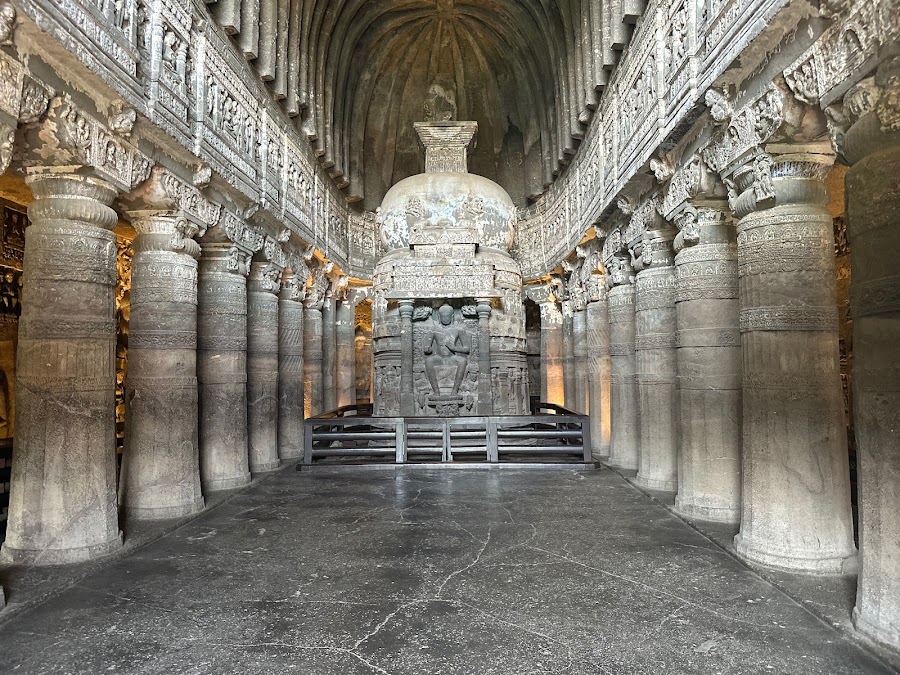
Ajanta Caves
Aurangabad, India
- Explore ancient Buddhist cave art.
- Learn about Jataka tales depicted in paintings.
- Photograph intricate murals and sculptures.
- Reflect on the spiritual significance of the site.
- Visit the Archaeological Survey of India museum.
Known for:
Description:
The Ajanta Caves are a UNESCO World Heritage site and a mesmerizing collection of 30 rock-cut Buddhist cave monuments dating back to the 2nd century BCE to about 480 CE. Nestled in the Sahyadri hills, the caves feature exquisite paintings and sculptures depicting the Jataka tales and the life of Buddha. The vibrant murals, executed in the tempera technique, showcase the artistic mastery of ancient Indian artisans. Each cave offers a unique glimpse into the rich cultural and religious heritage of the time. Prepare to be transported back in time as you explore these magnificent caves, a testament to human creativity and devotion. The caves provide a serene atmosphere, allowing for contemplation and appreciation of the intricate details of the artwork. It's a must-visit destination for art lovers, history buffs, and anyone seeking a spiritual experience.
History:
The Ajanta Caves were carved in two distinct phases. The earliest caves, dating back to the 2nd century BCE to 1st century CE (Satavahana period), are primarily Hinayana Buddhist caves, focusing on stupas and symbolic representations of Buddha. The later caves, created during the Vakataka dynasty in the 5th century CE, are Mahayana Buddhist caves, featuring elaborate sculptures and paintings of Buddha and Bodhisattvas. After centuries of neglect, the caves were rediscovered in 1819 by a British officer, John Smith, during a hunting expedition. Since then, extensive conservation efforts have been undertaken to preserve these invaluable artistic treasures. The caves provide invaluable insights into the socio-cultural and religious landscape of ancient India, reflecting the evolution of Buddhist art and philosophy over centuries.